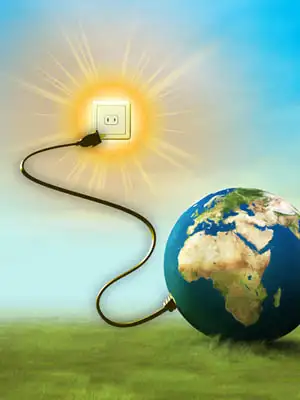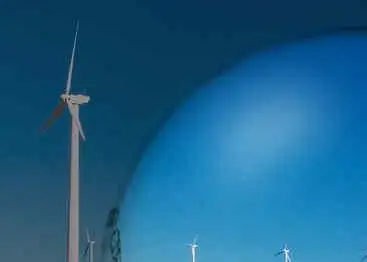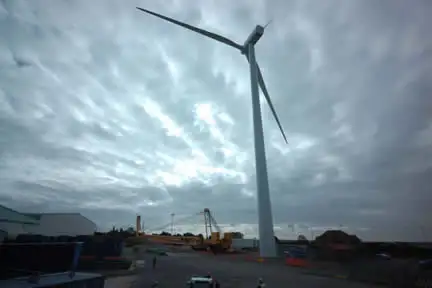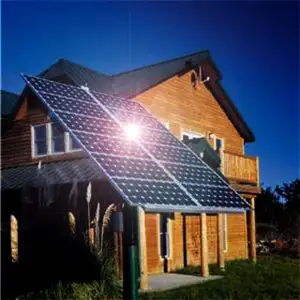Alternative Energy Power - Green Energy Technologies

Alternative energy power drives renewable grids using solar PV, wind turbines, and hydroelectric sources, optimized by power electronics, inverters, battery storage, and microgrids for efficient, resilient distribution and grid integration.
What Is Alternative Energy Power?
Alternative energy power delivers renewable power using electronics, storage and controls for efficient grids.
✅ Power electronics: MPPT inverters, VSCs, and converters
✅ Grid integration: protection, stability, and harmonics
✅ Storage: Li-ion, BESS sizing, EMS, frequency response
What alternative energy power technologies will make the largest impact? Alternative energy technologies have progressed so much in the past decade. However, some studies are starting to show that conventional power sources (such as fossil fuels and natural gas) will continue to have the lion's share of the world's energy mix for the next two decades. One study, conducted by the Boston Consulting Group, reports that forms of alternative energy power sources, such as wind power, will continue to provide smaller amounts of alternative energy power generation while other alternative energy power sources are ready to make a huge economic impact. Who? Let's take a look at the sources and their technologies. For readers new to the topic, this overview of what is alternative energy provides helpful context and definitions.
Alternative Energy Power - Solar Photovoltaic Technology
The BCG study predicts that solar PV (photovoltaic) will reach its cost competitiveness by 2015 to 2020 in the sunny regions of the world. However, the intermittency of PV's energy generation won't reach its full potential until technology breakthroughs are made in energy storage.
For practical insights, see how solar power in alternative energy is being deployed across different regions today.
Taking a look back into the last five years, it's clear that solar PV has significantly grown (up from 1.1 gigawatts in 2004 to 7.3 gigawatts in 2009, which is a 46 per cent annual increase). Today, solar panels are divided into two applications. Individual or small groups of panels can be used for distributed solar generation and larger groups of panels can be used to create utility-scale projects (also known as solar farms.) The underlying economics of the two applications are not that different, although solar farms can produce electricity at cheaper rates. Comparative data on renewable power generation helps benchmark PV performance against other resources.
Alternative Energy Power - Concentrated Solar Power Technology
Concentrated solar power (CSP) is another alternative energy power technology that is on its way to becoming a cost-competitive option - and soon (between 2015 and 2020). The beauty of this alternative energy power technology is that it can provide on-demand power through cost-effective thermal storage. Limitations to infrastructure and deployment barriers are significant, but surmountable.
Understanding the spectrum of renewable power sources clarifies where CSP complements wind and PV.
The generation potential of this alternative energy power solar resource over land is more than 100 times the total global demand for electricity. Solar energy without storage capacity technologies, such as thermal storage or hybrid solar-natural gas configuration, isn't reliable enough to be a sustainable energy source. However, CSP allows solar energy to play a larger part in the global electricity market and puts the alternative energy power source ahead of its alternative energy power counterparts. This perspective aligns with broader trends in renewable alternative energy adoption as grids adapt with storage and hybridization.
CSP is still small in terms of global power-generation capacity, but installed GSP capacity is expected to rise eightfold from 2009 (roughly one gigawatt) through 2015 (to more than eight gigawatts). Costs must drop for this alternative energy power technology to reach its full potential.
Cost curves are also influenced by policy and financing innovations within alternative energy solutions that scale deployment efficiently.
Alternative Energy Power - Smart-Grid Technologies
Many alternative energy power sources are capped due to their intermittent nature, but technologies like smart grid helps to accelerate their growth in the global energy marketplace.
A comprehensive view of the many forms of alternative energy underscores why flexibility is essential for balancing supply and demand.
By definition, a "smart grid" is a collection of equipment, infrastructure and information technologies designed to optimize the production, transmission and usage of electricity.
Incentives for smart-grid technologies include utility cost reduction, generation optimization and intelligent demand-response management. Smart-grid technologies improve the ability to integrate distributed generation and the ability to implement demand-response programs in intermittent energy sources such as wind energy and solar energy. Both factors are key enablers to expanding deployment in solar PV and wind technologies.











